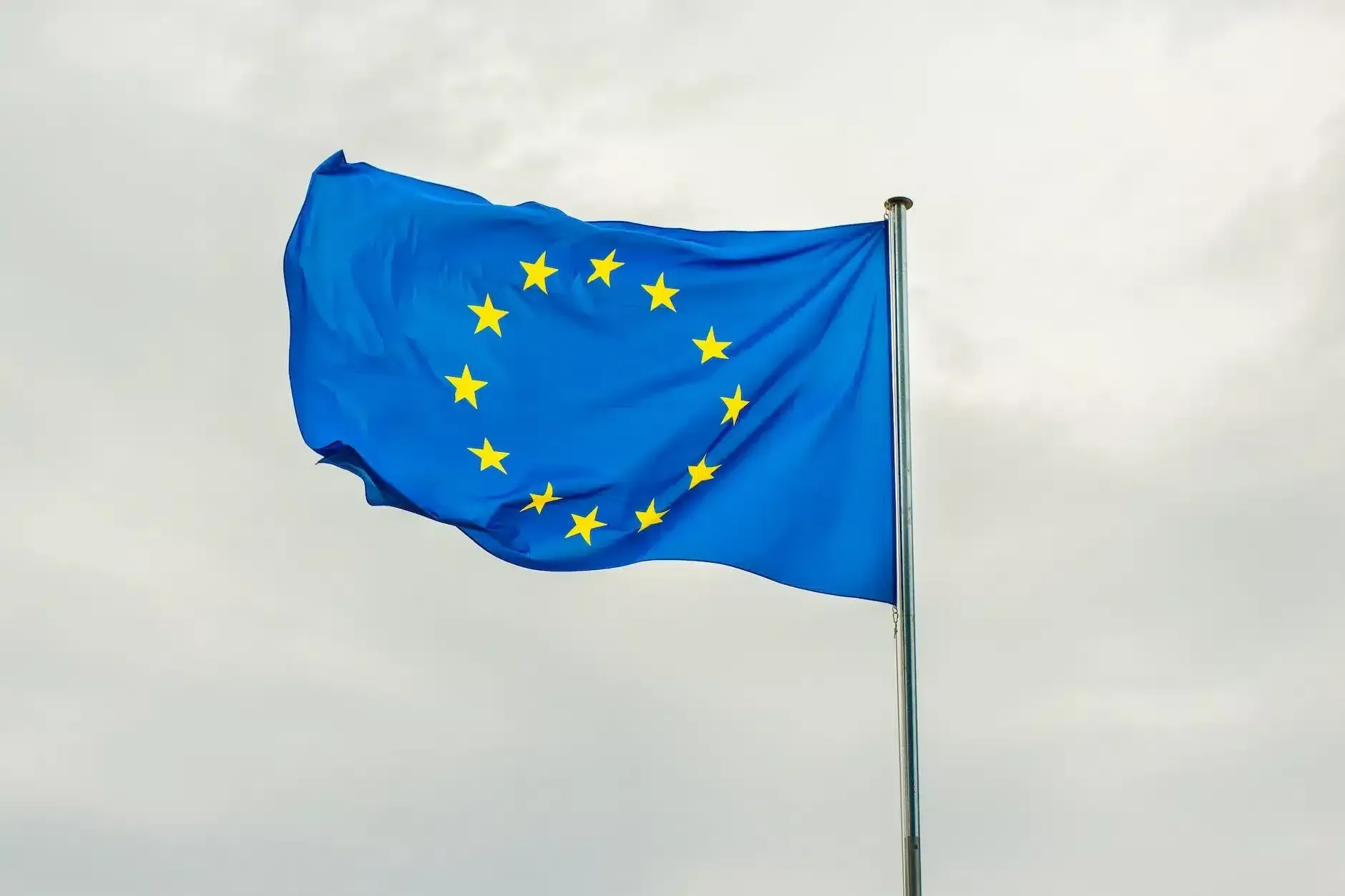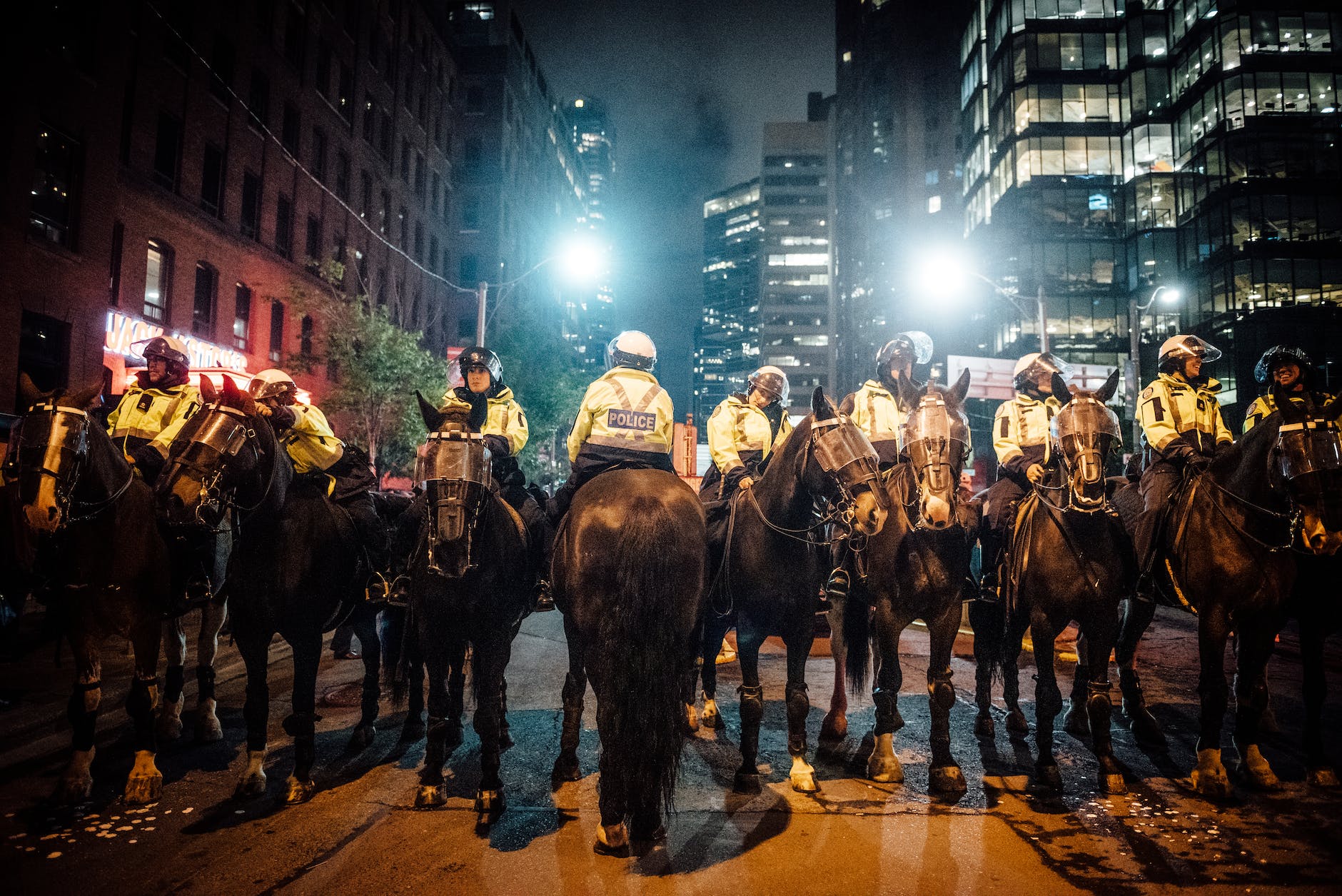Estimated reading time: 15 minutes
Migration isn’t just about brave souls embarking on a globe-trotting adventure—it’s a spicy political salsa that every nation has to taste. The trek from the global south to new frontiers isn’t merely a journey over borders; it’s a parade of diverse cultures, skills, and a bit of drama that politics just can’t get enough of. Imagine each migrant as a chess piece, not in the sense of games, but pivotal moves that reshape the board of international policies and local communities.

Politicos love to chat about migration trends over their morning coffee, or so we imagine. They’re either building bridges or walls, quite literally, while arguing over who should come over for dinner—and stay. This isn’t just a fad. The vibrant threads woven through society by migration are altering the socio-political fabric, from small-town whispers to the thunderous debates in national assemblies.
They say change is the only constant, and with migration, that rings true. The global south is serving a buffet of human resources, yet the political head chefs can’t quite agree on the recipe for integration. It’s a rich mix of opportunity, challenge, and yes, the occasional faux pas, where policy sometimes lags behind reality. In a world on the move, humor might just be the best luggage for the twists and turns of migration politics.
Historical Context of Migration

Migration is as old as humanity itself, but one can’t help but imagine the first prehistoric border dispute involved a caveman, a woolly mammoth, and some very confused fish. Fast forward a few millennia, and it’s clear that human movement has been a catalyst for monumental historical shifts.
Early Human Movement
It all started when ancient humans realized that their current address lacked certain amenities, like food and not being eaten by predators. They began migrating out of Africa about 1.8 million years ago, trekking across continents with all the determination of shoppers on Black Friday. This early movement set the stage for countless cultural exchanges—or perhaps the first instances of “Hey, I was here first!”
Major Migration Waves
Between nibbles of local fauna, humans started making big moves. The fall of empires and the allure of greener pastures led to waves like the Great Migration during World War I, where African Americans moved by the thousands from the rural South to the industrial North. Think of it as a massive family road trip, but with more significant socioeconomic implications.
Colonialism and Its Aftermath
Then came the era of colonialism, history’s ultimate crash course in “How Not to Visit New Places.” Europeans packed their bags, sailed across oceans, and set up shop in lands far and wide. The aftermath of colonialism left a complex legacy of new national borders and diverse societies, which can feel like the aftermath of a particularly raucous house party that’s still going on centuries later.
Theories and Frameworks

In the delightful world of academic pursuits, deciphering the intricacies of migration is akin to unraveling a grand, global tapestry with threads of various hues representing the innumerable factors at play. Let’s slip on our scholarly spectacles and peek at the merry musings of migration mavens.
Scholars’ Take on Migration
Migration isn’t just about packing suitcases; scholars seek to understand the “why” behind the great human shuffle. Rather than merely charting movements, the intellectual elite like Stephen Castles in his 2004 work Age of Migration seek to decrypt the underlying causes of migration, turning every stone for socio-economic cues and sniffing out political upheaval from a mile away.
Analytical Frameworks
To make sense of the migratory muddle, analytical frameworks provide the much-needed structure. Think of it as a treasure map, guiding through the maze of policy landscapes and socio-cultural labyrinths. These frameworks are keen on dissecting how legislation is formulated, uncovering the not-so-obvious connections between migration patterns and the intricate workings of domestic and international politics.
The Role of International Relations
Now let’s waltz onto the grand ballroom of international relations, where the dance of diplomacy and migration policies tango to the tune of global dynamics. It’s a stage where countries flex their geopolitical muscles, with each nation crafting strategies faster than a cunning fox amid a hen party, all to steer the narrative of immigration according to their national interests.
Migration Policies and Their Impact
Before one embarks on a pun-laden journey through the intricate world of migration policies and their oh-so-serious impact, it’s crucial to buckle up for a ride through laws that map the fate of wanderers, border strategies that would give chess grandmasters a run for their money, and the wallet-tingling effects these policies have on economic development. Now, let’s proceed without any further ado!
Immigration Laws
Immigration laws are the rulebooks that countries flaunt to show the world how they play the complex game of “Global Musical Chairs.” These laws often decide who gets to sit down (legally, of course) and who’s left still doing the samba around the borders. In the United States, for instance, the dance of legislation has seen a recent tempo change with new proposals aiming to reverse the former administration’s much stiffer routines.
Border Control Strategies
As every good gatekeeper knows, migration control is no laughing matter. Border control strategies are the bouncers of the sovereign club, ensuring that only those on the VIP list get through. They can range from the building of literal walls that would make Hadrian feel underaccomplished to sophisticated visa algorithms that decide your next vacation spot might just be your backyard. These strategies significantly affect migration flows, often inciting a sneaky game of geographical “tag” where migrants might seek alternative routes, as noted in research published by Wiley Online Library.
Economic Implications of Migration Policies
Money talks, and in the language of migration, it has a rather interesting accent. Policy decisions echo through the chambers of economic development like a surprising tax return. Strict policies can lead to talent booms or busts, directly impacting a country’s wallet—heavy industries, services, you name it. The economic implications are as varied as a flea market, with some policies creating lucrative job markets for citizens, while others inadvertently roll out the welcome mat for an underground economy that no one really invited to the party (and certainly didn’t offer to cater).
Political Implications of Migration
Migration is no trivial matter; it shakes up the political cocktail and serves it with a twist. As migrants cruise across borders, they bring more than just their luggage – they pack a political punch!
Effect on National Security
The influx of migrants can cause a nation’s security bods to leap into action like cats on a hot tin roof. They see migration as a dance with uncertainty, often tightening their belts and borders to keep the national interest safe. This isn’t just about guarding their precious heirlooms; it’s about preventing the possibility of foul play. The sniffing out of potential threats among newcomers becomes as intense as a hound on a scent trail.
Shaping National Identity
Migration stirs the national pot, adding a dash of exotic flavor to the melting pot. Think of it as a culinary experiment that can lead to the most interesting of dinner conversations about who gets to call themselves the chef! National identity becomes a pie everyone wants a slice of, and debates can get as heated as an oven. It’s a spicy topic, with migrations adding new ingredients that sometimes change the original recipe beyond recognition.
Migration and Political Regimes
Ah, political regimes and migration, a duo more dynamic than peanut butter and jelly. Some rulers greet migrants with open arms, using their stories as a feather in their multicultural caps. Others see an opportunity to tighten the reins, stirring nationalism into the pot like a stern chef fearing too many cooks. The political landscape waltzes to the tune of migration, and depending on the dance, it can trip into a tango of tighter controls or a waltz of welcome wagons.
Democracy, Authoritarianism, and Human Rights
In a world teetering on the edge of a political seesaw, the migration landscape is painted with the dramatic clash of democracies and authoritarian regimes, often leaving human rights hanging in the balance. It’s not quite a soap opera, but the stakes are real and the actors are far less glamorous.
Movement in Democratic vs Authoritarian States
As democracies champion free will, they often feature a ‘revolving door’ policy, encouraging the inflow and outflow of individuals. These states typically support the idea that people should vote with their feet, as well as with ballots, if they fancy doing so. On the flip side, authoritarian governments tend to grip their borders with an iron fist, sometimes even rolling out an unwelcome mat to potential emigrants. Think of authoritarian states as overbearing parents enforcing curfew, scrutinizing every exit and entrance with a suspicious glance.
Human Rights and the Dilemma of Sovereignty
The notion of human rights is the court jester in the kingdom of international politics, ostensibly valued but often sidelined when sovereignty enters the scene. In democratic contexts, human rights are usually the belle of the ball, given the attention and protection entitled to them. Conversely, authoritarian regimes often view human rights as an optional accessory, subject to removal when they clash with national interests or, more bluntly, the regime’s whims. This precarious balance act becomes even more pronounced when individuals cross borders, bringing the question of which rights travel with them and which get detained at customs.
Security Concerns and Ethical Considerations
In the heated kitchen of political discourse, the topics of migration, security, and ethics jostle like pots and pans on a busy stove. Each subsection turns up the heat on a different aspect of this complex meal.
Securitization of Migration
Migration is often treated like a sizzling steak in the international policy BBQ – high-stakes and prone to flare-ups. Countries have increasingly viewed migration through the security-lens, treating it as a potential risk to national stability rather than a human phenomenon. This securitization of migration leads to policies that prioritize border controls and may spark heated debates about the balance between sovereignty and open-door hospitality.
Migration, Terrorism, and Crime
The narrative that migration routinely brings crime and terrorism to the table should be taken with a grain of salt. Although such concerns are not completely unfounded, the relationship is often oversimplified. Migration policies need to cut through the gristle to effectively address and sift out legitimate threats from the stew of misconceptions.
Ethical Debates on Asylum Seekers
Pouring over the ethical soup of asylum seekers’ rights, one finds ingredients of compassion, international law, and moral duty. Asylum seekers are often caught in a pressure cooker of political interests, facing a broth of procedural hurdles. The ethical obligation to protect individuals fleeing from persecution must be carefully measured against the safety and security ladle.
Migration as a Catalyst for Social Change
Migration isn’t just about the movement of people; it’s the world’s unsung interior designer, constantly reshuffling the societal furniture. It shakes up the social structures and paints towns with the vibrant hues of multiculturalism.
Impact on Social Structures
Migration walks into the party of a country’s social structures and doesn’t hesitate to stir things up. They swap cultural playlists, leading to unique social remixes where traditions from far-flung corners of the world get a local spin. Think taco trucks on New York streets or yoga studios in downtown Tokyo.
Cultural Integration and Multiculturalism
Speaking of fusion cuisines, integration is like that master chef trying to blend exotic spices with hometown flavors. Sometimes it’s a hit; other times, the local palate is just not ready. But when it works, they create a multicultural buffet that’s a feast for the senses and the soul. Civil society becomes the dinner table where everyone’s invited to break bread, and suddenly, “diverse” is the dish of the day.
Economic Factors and Development
When money flies across borders in the pockets of migratory birds (we mean humans, of course), it flutters its economic feathers on labour markets and development.
Migration’s Effect on Labour Markets
Migration, a little like a game of musical chairs in the job market, reshuffles the deck for both employees and employers. In the host countries, migrants often fill the gaps in the labor force, particularly where there is a demand for certain skills or a reluctance from the native population to take on certain jobs. Contrary to the myth that migrants take jobs from locals, they often create complementary roles that can lead to more employment opportunities for everyone. Meanwhile, in the countries they’ve left behind, the workforce might just get a little less crowded, easing up on the job competition. Take a peek at International Migration for some detailed insights on this.
Remittances and Economic Growth
Let’s talk about remittances, the financial love letters sent home by migrants, which can sometimes feel like Santa dropped a bag of cash instead of presents. These remittances are like magic beans for economic growth, giving families extra cash to spend, which, in turn, stimulates local economies. In some countries, these funds are a significant slice of the GDP pie. They highlight the private sector’s role, where the cash influx bolsters consumption and can lead to a ripple of economic activities. It’s like a continuous cycle of buy, spend, and sometimes even invest—as outlined in this gripping financial thriller: Impact of Migration.
Environmental Migration and Climate Change
As the planet heats up, so does the number of people packing their bags. Not for vacation, mind you, but because their homes have decided to take a swim or throw a barbecue without a grill. This is where the rubber boots meet the road for policy wonks and nations alike.
Migration Induced by Climate Events
When Mother Nature throws a tantrum, she doesn’t send a polite RSVP. As climate change intensifies, extreme weather events like hurricanes, floods, and droughts are becoming the unwanted party guests in many people’s lives. This leads to forced migration, with people relocating not because they want to explore new horizons, but because their current ones are either underwater or bone dry. Picture the Earth as a gigantic real estate agent that’s starting to show its moody side, surprising folks with a new water view, sans the premium.
- Hurricanes and Floods: They’re turning into the ultimate house flippers, renovating without permission.
- Droughts: They turn fruitful plains into amateur baking classes, lots of sun without the fun.
- Sea-Level Rise: It’s redefining beachfront properties and the results aren’t so sunny.
Policy Responses to Environmental Migration
Steering this ship through the stormy waters of environmental migration is a beast of its own. Environmental policies are popping up like mushrooms, trying to tackle the slippery subject of populations on the move. Governments are knitting a colorful quilt of regulations, strategies, and agreements to snuggle the issue:
- Regulatory Norms: Because nothing says ‘fun’ like emission standards and carbon trading schemes.
- Organising Principles: The phrase “common but differentiated responsibility” is the new black in the fashion of policy slogans.
- Fundamental Norms: Everyone wants a piece of ‘climate justice’ and intergenerational rights—it’s like the latest trend, but with moral fiber.
With a sprinkle of uncertainty and a pinch of pragmatism, the world is waltzing around the maypole, trying to figure out how to turn the environmental migration challenge into a celebratory dance, rather than a dance-off. It’s like teaching an elephant to tango, but everyone’s still stepping on each other’s toes.
The Future of Migration
In the crystal ball of society, the future of migration dangles like a participle—not always where you’d expect it. Peek further, and you’ll spot the pattern in the leaves. They say data is the new oil, so let’s drill down and see where humanity’s great shuffle might lead us next.
Predicting Migration Patterns
The modern Nostradamus would need more than a fancy hat to forecast migration patterns; they’d need heaps of data. Analysts might predict that as oceans rise, people will thrive on buying that oceanfront property in Colorado. On a serious note, data points indicate that climate change, political stability, and economic opportunities will be the puppeteers guiding future migration flows.
Technological Advances and Migration
If migration had a Facebook relationship status with technology, it would be “It’s Complicated.” As biometric borders become less science fiction and more Monday morning routine, technology will be the chaperone of future migrations. Expect retina scans at immigration much like airport body scans looking for those extra holiday pounds. Technology promises a smoother journey, but it might just ask for your digital life story in exchange.
Preparing for the Next Big Move
In a world where the only certainty is uncertainty, preparing for migration’s next big wave is like packing for weather that can’t make up its mind. Nations and organizations aim to arm themselves with data-laden forecasts but might still end up bringing a raincoat to a heatwave. The lesson here? Drill the data, tweak the tech, and keep an agile approach to migration policy—while maintaining a sense of humor.



